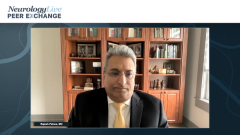
Managing OFF Episodes in PD
Robert A. Hauser, MD, MBA, and Rajesh Pahwa, MD, comment on therapeutic obstacles in treating OFF episodes and how to optimize the management of patients with Parkinson disease.
Episodes in this series

Stuart Isaacson, MD: There are some obstacles in trying to define OFF. Lots of times we increase levodopa, change the timing, and adjust injunctive medications and extenders, yet patients still have OFF. How often does that lead you ask whether we’re addressing the right type of OFF? For example, if we’re trying to make less wearing OFF, but a patient has delayed onset. Perhaps we haven’t recognized that. How much troubleshooting do you do when you treat OFF, but a patient comes back and doesn’t have the expected results? What do you do then?
Robert A. Hauser, MD, MBA: You need to be careful with that statement because it’s easy to convince yourself that we do poorly in treating OFF when you think about clinical trials. You and everyone on this video know that in clinical trials, we look for patients with at least 2 hours of OFF. When you look at the mean OFF at baseline, it’s about 6 hours. A lot of our therapies decrease OFF by an hour or a little more, so we’re left with 5 hours, but that’s in clinical trials. In clinical practice, we can catch patients when they’re wearing OFF, 15 minutes between doses or a half hour between doses. If you add it up, maybe it’s a couple of hours a day. But you can eliminate a lot of end-of-dose wearing OFF through the day with simple adjustments to levodopa, going to a long-acting levodopa, or adding an adjunct. We can be pretty darn successful in monitoring those patients and improving them…so it’s not a problem. That’s my first point. However, what you say regarding extending the benefit of levodopa, it’s a lot easier than getting it to work faster. We don’t have that many treatments to make motor status improve faster, although we do have some.
Rajesh Pahwa, MD: We have to keep in mind that we have quite a few medicines we use for OFF time. Our first goal is that we and our patient recognize when they’re OFF. Once we recognize they’re OFF, using adjunctive therapies will help the patients OFF. Ideally, we’d like to know when it’s happening, how long it is, is it predictable, is it unpredictable? At the least, we need to recognize OFF and treat it. But it’s if they don’t respond to something, we may need to figure out why that response isn’t occurring. As I mentioned earlier, if a patient is having early morning OFF, adding adjunctive therapy may not help that patient because they’re still going to have that early morning OFF. But for a patient who’s having end-of-dose wearing OFF, pretty much using any adjunctive therapy, we should be able to help them. Those are a couple of points to keep in mind.
Transcript Edited for Clarity
Newsletter
Keep your finger on the pulse of neurology—subscribe to NeurologyLive for expert interviews, new data, and breakthrough treatment updates.































